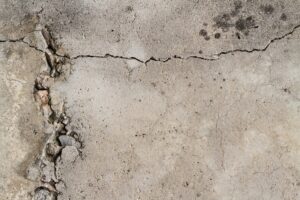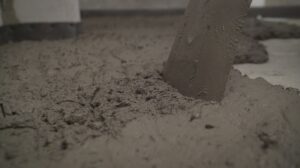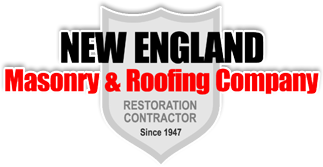Category: Restoration
How Long Does Building Restoration in Connecticut Take on Average?

The exact duration of a building restoration in Connecticut can vary, depending on several factors. And in the case of older buildings, which require more work, it can take a bit longer than for newer buildings. Providing an exact average timeframe is challenging as each restoration project is unique. However, the type of restoration needed, be it small, medium, or large scale, can determine the length of the project.
An initial assessment is the first thing that must be covered when restoring a building. This process can take a few months. And doing a complete evaluation can help you understand the exact amount of work needed and the recommended replacements and repairs.
The initial design is also essential in determining the exact duration of your building restoration project. The recommended specifications and requirements for the project are also significant, as well as the aesthetics, safety, and efficiency of the project in general.
After the initial design, the detailed design must also be considered. For one thing, the structure of the building should be able to support all the restorative materials and systems. The energy-efficiency-related aspects must also be considered when determining the exact period the building restoration will take. And, of course, the execution of the project can be done in a certain amount of time.
Healthy Walkways and Driveways – Tips for Concrete Restoration in Connecticut

Concrete driveways and walkways are already popular choices for residential and commercial construction. However, they bring inherent risks associated with overtime wear and tear. The following tips to restore and maintain healthy driveways and walkways in Connecticut will guarantee a long-lasting and aesthetically pleasing area.
- Repairing cracks and potholes
Cracks in concrete walkways and driveways can lead to further damage if left unrepaired. The best option for repair is to call a professional who can assess the extent of the damage, offer guidance on the best repair strategy, and then repair the crack.
- Sealing
Sealing the surface of your concrete driveway and walkway with a sealer is a great way to increase the lifespan of the area. The sealing will protect the surface from oil, grease, and other contaminants that can slowly degrade the concrete.
- Regular maintenance
Regular maintenance is vital to help ensure a healthy walkway and driveway. The most common maintenance activities include cleaning, resealing, and fixing defects in the surface.
These are just a few tips that can help you restore and maintain healthy concrete walkways and driveways in Connecticut. For more information or to request help with a restoration project, it is best to speak to a qualified Connecticut concrete restoration professional with the knowledge and expertise to advise on the best action plan.
Is Building Restoration Always a Good Idea for Older Buildings?

As cities, towns, and villages struggle to stay relevant in a modern world of relentless innovation and change, more and more places are turning to one of the most cost-efficient solutions to maintain the character of their communities: the restoration of old buildings. But is building restoration a viable option for older buildings? The answer is not so straightforward.
When done appropriately, building restoration can be a very positive experience. It can help preserve a city’s or town’s unique identity and architectural value, a significant source of tourism and economics.
Restoration can also be associated with hidden benefits, such as improving the structural integrity of a building as well as increasing its lifespan. It can also be environmentally friendly, as the materials are generally recycled and reused.
On the other hand, restoring an older building can be expensive and labor-intensive, taking a long time to complete, and the completion date can sometimes be hard to predict.
Also, restoring a building may not be the most viable option in some instances. Restoration may be impossible if a building’s condition is too far gone to be brought back to life. In other cases, the restorative costs may be so significant that they outweigh the project’s potential benefits.
Whether restoration is viable for an older building depends on numerous factors. It requires a professional evaluation and an honest assessment of the costs, benefits, and risks involved. If carefully done, restoration can be a great way to maintain the character of a community while also taking advantage of modern and energy-efficient structural techniques.
Concrete Restoration In Connecticut: Finding The Right Specialist

In order to be successful with your concrete restoration in Connecticut, finding the right specialist certainly is very important. Keeping your masonry structures in a good state involves hiring the best people for the job and thus finding out about the best materials and tools for your restoration project.
When the cracks do not get repaired in a certain amount of time, they can become dangerous and, therefore, cause even more problems to your building, so steps must be taken as soon as any kind of problems are discovered.
And before hiring your concrete restoration Connecticut specialist, you may have to find a stone repair specialist, who can help you detect the problematic area and the exact degree of damage that was done to it. Faults need to be rectified and damage has to be prevented in the future, and these are some of the things that a concrete restoration expert can certainly help you with.
Another important detail that you should take care of while doing the concrete restoration is to make sure it fits into your budget. In other words, the materials that you are going to use should not be overpriced and should also last for a long time.
The Importance of Tuckpointing in Masonry Restoration

Tuckpointing refers to the process of fixing the mortar between the bricks in any type of masonry restoration construction. The thing about mortar is that when it starts to degrade, it fails to perform its main function, that of keeping the structural integrity of a building. Tuckpointing plays an essential part in masonry restoration due to the fact that it clears out the old mortar and replaces it with the new one, and thus makes your building more resistant.
As compared to similar techniques, such as re-pointing, tuck pointing also adds contrasting lines to the structure, so that the building can look appealing from the visual point of view. But we need to stress the fact that tuck pointing does more than simply add more beauty to your masonry structure. It can also act as a sealant for it. What mortar actually does is to seal large gaps in the walls of a building. And when mortar cracks and breaks, these gaps can lead to water infiltration or other unpleasant situations inside the building.
When water gets inside the building, this can cause the appearance of mold. But pests can also be the result of water infiltration. With the help of experts, you can solve your tuckpointing issues in no time.

















